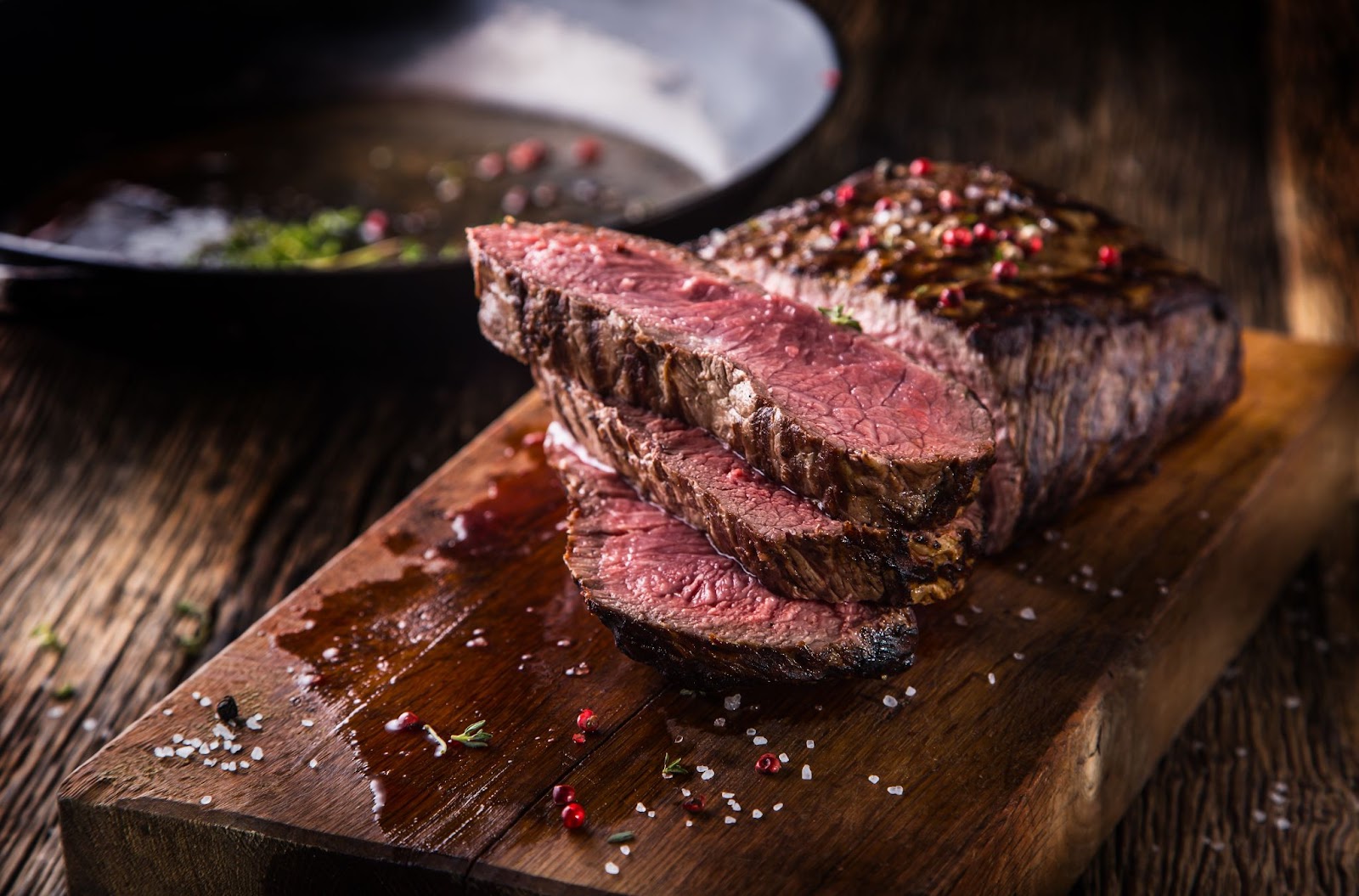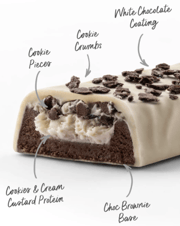Chefs share their 9 best-kept secrets for cooking the perfect steak at home
- Replies 3
We don't know about you, members, but we absolutely love a good steak dinner. There's something so satisfying about sinking our teeth into a perfectly cooked, juicy piece of steak that just melts in our mouths.
And while we're definitely not opposed to going out for the occasional steak dinner (especially now that Seniors Card discounts are available at some pretty amazing restaurants!), we also know that cooking a great steak at home is definitely possible – you just have to know how.
That's why we’ve compiled top tips and tricks from chefs for cooking up the perfect steak right in your own kitchen. So whether you're looking to treat yourself or impress your dinner guests, read on for everything you need to know about cooking an unforgettable steak!
Choose quality meat.
First and foremost, it's important to choose a high-quality piece of meat if you want your final product to be delicious. After all, as they say, 'you can't make a silk purse out of a sow's ear'! When picking out your cut of beef from the butcher or grocery store, look for something that has nice marbling (that is, streaks of fat running through it), as this indicates that the meat will be tender and juicy once cooked. You should also pay attention to colour; avoid anything that looks excessively red or purple as this could be an indication that the beef isn't fresh.

Aren’t you hungry simply looking at it? We are! Image Credit: Shutterstock
Dry the steak out.
'Before cooking, you want to make sure the surface of the steaks has as little moisture as possible,' says Chef Tsarnas. Chef John Tesar is a restaurateur known for multiple steakhouses and a recent recipient of a Michelin Star for his work at Knife & Spoon (so you know his advice is great).
'You can dry them well with paper towels, or you can salt them and let them rest on a rack in the fridge overnight, bringing moisture to the surface and allowing it to evaporate. This helps you achieve much more efficient browning when searing!'
Prep for perfection.
'The longer you let your beef marinate, the better, even up to 24 hours,' says Chef Alex Reitz.
'Acidic marinades with vinegar or lime juice are best suited for more coarse cuts like flank steak. Just add olive oil and spices to your acidic base and you're good to go! Elevate more tender cuts of beef with dry rubs.'
Use the reverse sear technique.
'You gently bring the steaks close to your final desired doneness (in a low temp oven for example), and then finish with a hard, high heat sear,' says Chef Tsarnas.
'This helps guarantee an evenly cooked, tender steak with a great crust, without risking overcooking those beautiful pieces of meat you worked so hard on!'
Finish it in a pan.
The flames of the grill can cause the steak to lose its flavour and taste, while a pan can help amplify that flavour.
'By cooking steaks in the pan, the meat's fat isn't lost into the charcoal but instead is preserved and becomes a part of the cooking medium, a powerful agent in building flavour,' says Chef Tesar.
'Additionally, this technique creates a beautiful crust and browning while never having to worry about burning. The pan can get plenty hot in just a few minutes.'
Add in a drizzle of oil before the steak.
Before placing your steak into the pan, drizzle a neutral oil in the pan to help get the steak going, such as vegetable or canola oil.
'The oil isn't used for flavour, rather it's the conductor of heat energy to begin cooking the meat,' he says. 'Avoid starting with butter or olive oil because the low smoke points will burn the fat before the steak is done which causes bitter flavour development.'
Sear without fear.
'Avoid checking or messing with your steak too much,' he says. 'Trust your timer or instant-read thermometer—cook to a recommended 60 degrees celsius and flip as little as possible to allow the beef to brown and sear properly without disturbance.'
Let the steak rest.
When the steak is done, be sure to let it rest on a plate or cutting board, tended loosely with aluminium foil, before slicing and serving.
'A step many novice cooks overlook,' says Chef Reitz. 'Allow your meat to rest once it comes off the grill or pan for 5 to 7 minutes, so the juices absorb into the meat rather than draining onto your plate.'
Remember, every cut of meat is different, which means they will need different levels of resting time.
'Large cuts of steak may benefit from some resting, but thinner steaks shouldn't need resting more than a minute or two,' says Chef Tesar.
'Overall, a steak shouldn't rest more than five minutes to avoid carryover cooking.'
Cut like a pro.
'When slicing your steak, cut across the grain, or perpendicular to the direction of the fibres, to maximise tenderness and minimise chew,' says Chef Reitz.
'Also, avoid piercing the beef with a fork at any time while carving to prevent additional drainage. Try using tongs to hold it instead while slicing to preserve the juicy goodness!'
And there you have it, the key to the perfect home-cooked steak! Put it in practice this weekend and let us know about all the compliments you receive!
And while we're definitely not opposed to going out for the occasional steak dinner (especially now that Seniors Card discounts are available at some pretty amazing restaurants!), we also know that cooking a great steak at home is definitely possible – you just have to know how.
That's why we’ve compiled top tips and tricks from chefs for cooking up the perfect steak right in your own kitchen. So whether you're looking to treat yourself or impress your dinner guests, read on for everything you need to know about cooking an unforgettable steak!
Choose quality meat.
First and foremost, it's important to choose a high-quality piece of meat if you want your final product to be delicious. After all, as they say, 'you can't make a silk purse out of a sow's ear'! When picking out your cut of beef from the butcher or grocery store, look for something that has nice marbling (that is, streaks of fat running through it), as this indicates that the meat will be tender and juicy once cooked. You should also pay attention to colour; avoid anything that looks excessively red or purple as this could be an indication that the beef isn't fresh.
Aren’t you hungry simply looking at it? We are! Image Credit: Shutterstock
Dry the steak out.
'Before cooking, you want to make sure the surface of the steaks has as little moisture as possible,' says Chef Tsarnas. Chef John Tesar is a restaurateur known for multiple steakhouses and a recent recipient of a Michelin Star for his work at Knife & Spoon (so you know his advice is great).
'You can dry them well with paper towels, or you can salt them and let them rest on a rack in the fridge overnight, bringing moisture to the surface and allowing it to evaporate. This helps you achieve much more efficient browning when searing!'
Prep for perfection.
'The longer you let your beef marinate, the better, even up to 24 hours,' says Chef Alex Reitz.
'Acidic marinades with vinegar or lime juice are best suited for more coarse cuts like flank steak. Just add olive oil and spices to your acidic base and you're good to go! Elevate more tender cuts of beef with dry rubs.'
Use the reverse sear technique.
'You gently bring the steaks close to your final desired doneness (in a low temp oven for example), and then finish with a hard, high heat sear,' says Chef Tsarnas.
'This helps guarantee an evenly cooked, tender steak with a great crust, without risking overcooking those beautiful pieces of meat you worked so hard on!'
Finish it in a pan.
The flames of the grill can cause the steak to lose its flavour and taste, while a pan can help amplify that flavour.
'By cooking steaks in the pan, the meat's fat isn't lost into the charcoal but instead is preserved and becomes a part of the cooking medium, a powerful agent in building flavour,' says Chef Tesar.
'Additionally, this technique creates a beautiful crust and browning while never having to worry about burning. The pan can get plenty hot in just a few minutes.'
Add in a drizzle of oil before the steak.
Before placing your steak into the pan, drizzle a neutral oil in the pan to help get the steak going, such as vegetable or canola oil.
'The oil isn't used for flavour, rather it's the conductor of heat energy to begin cooking the meat,' he says. 'Avoid starting with butter or olive oil because the low smoke points will burn the fat before the steak is done which causes bitter flavour development.'
Sear without fear.
'Avoid checking or messing with your steak too much,' he says. 'Trust your timer or instant-read thermometer—cook to a recommended 60 degrees celsius and flip as little as possible to allow the beef to brown and sear properly without disturbance.'
Let the steak rest.
When the steak is done, be sure to let it rest on a plate or cutting board, tended loosely with aluminium foil, before slicing and serving.
'A step many novice cooks overlook,' says Chef Reitz. 'Allow your meat to rest once it comes off the grill or pan for 5 to 7 minutes, so the juices absorb into the meat rather than draining onto your plate.'
Remember, every cut of meat is different, which means they will need different levels of resting time.
'Large cuts of steak may benefit from some resting, but thinner steaks shouldn't need resting more than a minute or two,' says Chef Tesar.
'Overall, a steak shouldn't rest more than five minutes to avoid carryover cooking.'
Cut like a pro.
'When slicing your steak, cut across the grain, or perpendicular to the direction of the fibres, to maximise tenderness and minimise chew,' says Chef Reitz.
'Also, avoid piercing the beef with a fork at any time while carving to prevent additional drainage. Try using tongs to hold it instead while slicing to preserve the juicy goodness!'
And there you have it, the key to the perfect home-cooked steak! Put it in practice this weekend and let us know about all the compliments you receive!







